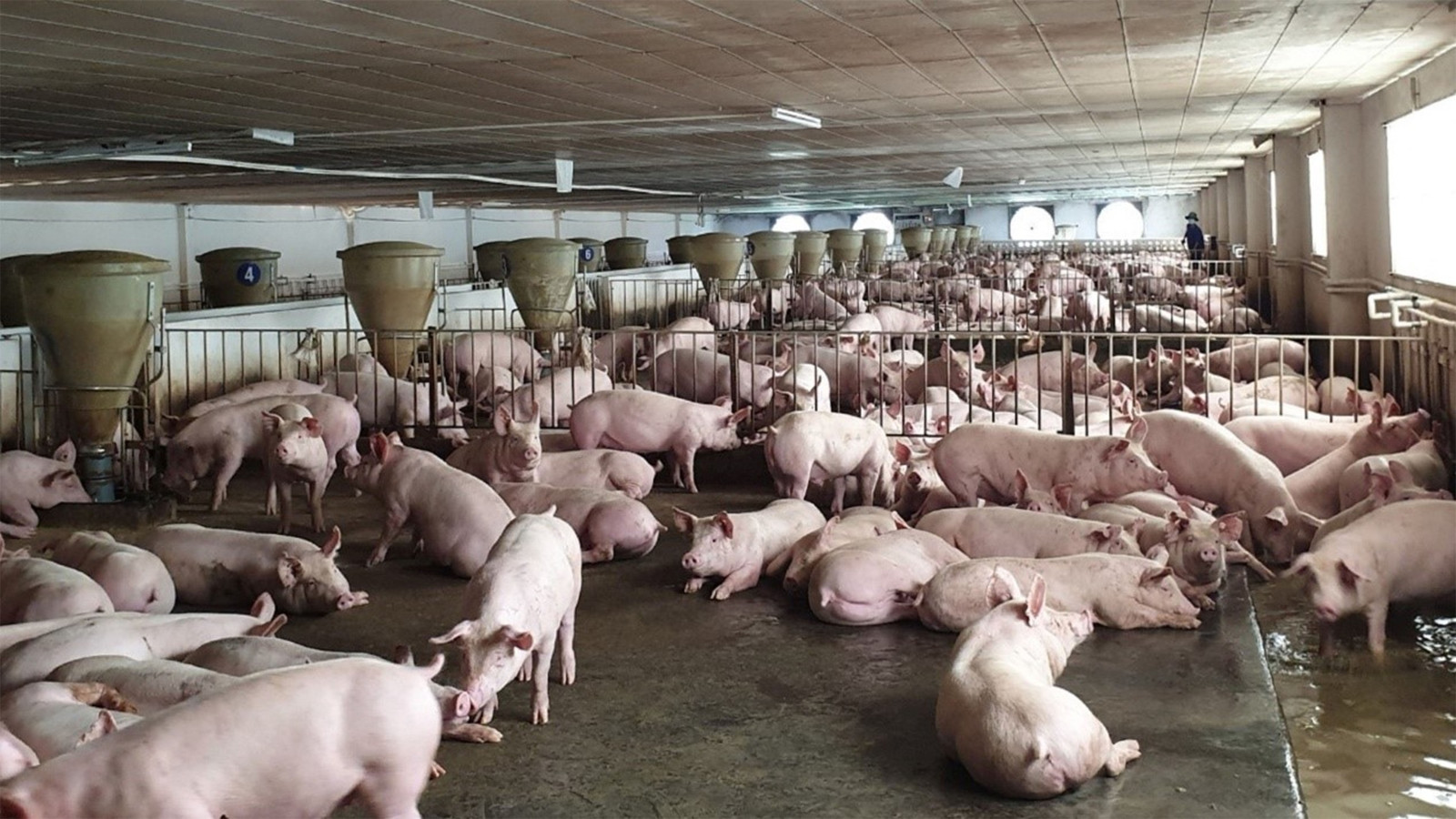To develop husbandry safe from pandemics
The livestock industry of the province is gradually shifting towards increasing the proportion of economically valuable, easily marketable animals with stable markets such as pork, beef, and poultry. At the same time, the industry continues to undergo positive shifts from small-scale and household livestock farming to industrial and semi-industrial farming, ensuring disease control and environmental safety.
The concentration of husbandry
The livestock industry in the province is currently promoting the concentrated livestock farming model, combining environmental protection and disease safety. The province has a total of 265 pig farms with high-quality meat and breeding pigs, with a total of 714,000 pigs; 150 chicken farms with a total of 8.3 million chickens. Among them are companies investing in breeding of breeding chickens, egg-laying chickens, and meat chickens such as Ba Huan Co., Ltd., Emivest, CJ Vina, An Ty, Japfa, CP, Viet Swan, Binh Minh, 3F Viet, etc... Many pig farms have production links with Ba F, CP, CJ Vina, Japfa, Làng Sen, Anova-Farm, CJ-Agri, Vinh Tan farm.

In the province, many large-scale concentrated livestock farms have been formed, ensuring biological safety
According to the Department of Livestock, Veterinary and Aquatic Products of the province, the closed barn farming model, cold farms in pig and chicken farming mainly focus on 4 districts in the north, including Bau Bang, Phu Giao, Dau Tieng and Bac Tan Uyen. The form of cooperation is that the company invests in breeding, feed, veterinary medicine, and the farmers invest in building barns, livestock equipment, and taking care of breeding, thereby bringing high economic efficiency.
Many farmers have said that in recent times, small-scale pig farming has not only been unstable in terms of output, but also concerns about disease have caused them to suffer losses on numerous occasions. Meanwhile, large-scale pig farming has brought about tangible economic benefits, contributing to the shift in production structure and diversification of livestock species. At the same time, it helps to change the production mindset of the people from small-scale farming to farm-scale, bringing economic efficiency and helping farmers limit diseases and minimize environmental pollution.
In addition, cattle farming on a farm scale has become more popular, with the quality of the cattle herd being maintained and developed through crossbreeding with specialized meat breeds. Farmers make use of dykes, inefficient agricultural land to grow grass and utilize agricultural by-products, which has brought stable efficiency. Many projects and investment support programs for cattle farming have contributed to the overall development of the cattle herd.
Joint series set up
Mr. Tran Phu Cuong, Director of the Livestock, Veterinary and Aquaculture Sub-Department of the province, said that in recent times, the livestock industry of the province has made positive changes. The agricultural sector has been investing and shifting production methods, improving the quality of animal breeds, promoting production and consumption linkages, aiming for sustainable farming and development.
Along with that, vaccination, quarantine, control of slaughter, transportation of livestock, poultry, and animal products in and out of the province have been tightly controlled, ensuring prevention and minimizing the spread of diseases, and ensuring the safety of animal husbandry products. At the same time, the sector continues to implement measures to maintain 13 disease-free zones and safe bases for avian influenza, Newcastle disease, foot-and-mouth disease in livestock, swine fever, and rabies in dogs and cats; monitor the disease-free zones and recognized safe bases. At the same time, the sector continues to implement measures to maintain 13 disease-free zones and safe bases for avian influenza, Newcastle disease, foot-and-mouth disease in livestock, swine fever, and rabies in dogs and cats; monitor the disease-free zones and recognized safe bases.
According to Mr. Cuong, currently there have been no outbreaks of disease in the province. However, due to unfavorable weather conditions, the risk of disease outbreaks is very high. The veterinary sector is strengthening communication efforts and actively coordinating with local authorities to implement a comprehensive set of measures to prevent and control disease outbreaks in livestock and poultry.
Speaking about the development orientation of the livestock industry in the coming time, Mr. Tran Phu Cuong believes that the agricultural sector will continue to develop livestock farming in the direction of farms, enhance linkages in livestock activities, and replicate effective scientific and technological livestock farming models. At the same time, the industry encourages and supports the formation of a link chain between farmers and businesses to ensure the sharing of responsibilities and benefits among parties, avoid risks, help consumers trace the origin of products, and balance supply and demand of livestock products. Along with that, chain link will avoid the case of livestock products losing value, not only creating a supply of meat that ensures quality for consumers but also ensuring profits for livestock farmers.
Reported by Thoai Phuong – Translated by Vi Bao

